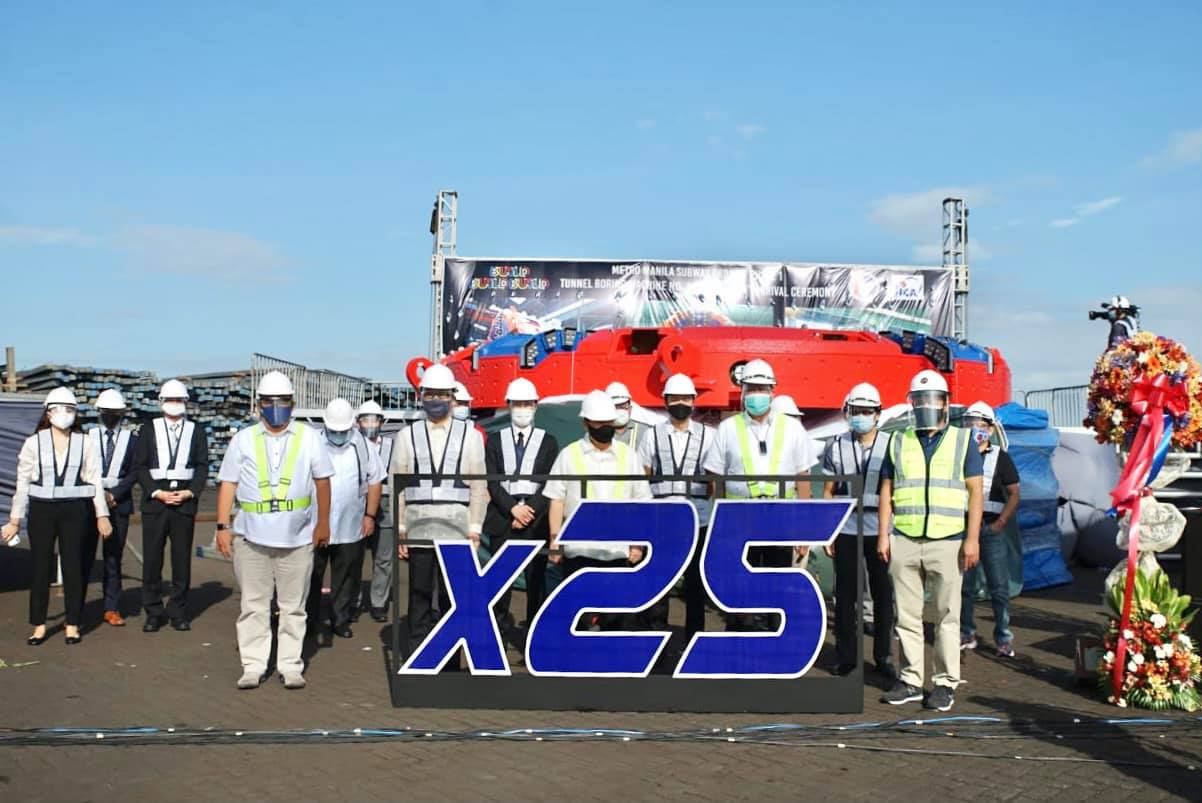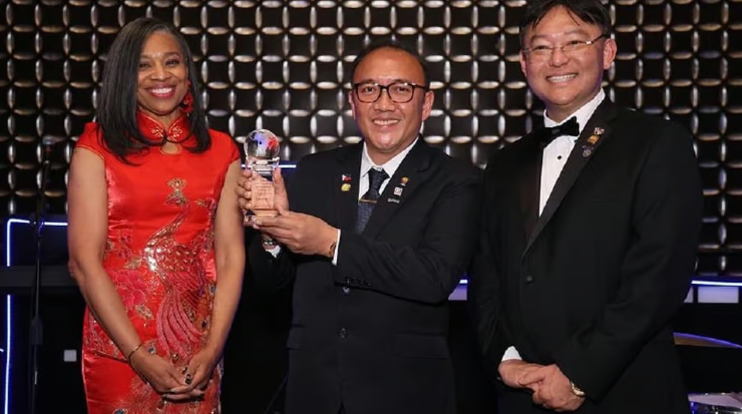The cutter head of the first tunnel boring machine (TBM) for the Philippines’ first-ever underground railway system arrived on Feb 5, 2021, marking another milestone in the Department of Transportation’s (DOTr) Metro Manila Subway project.
During the arrival ceremony, DOTr Secretary Arthur Tugade said it named this first of six TBMs for the partial operability section of the subway project as “Kaunlaran” which means progress.
“This tunnel boring machine symbolizes its name, ‘Kaunlaran.’ Today, I ask you, join us in riding the tunnel boring machine and riding the country’s first metro subway. Because ito ho ay paglakbay papunta sa kaunlaran (Because this is a journey towards progress),” Sec. Tugade said,
The arrival of the first TBM Cutter Head signals the continuous arrival of the other TBM equipment and materials. On the following days of February 2021, the remaining parts of the machine will arrive and will be transported at the site for assembly. This will be followed by the conduct of a mandatory operational test prior to the lowering and main drive underground that is expected to be done in the third quarter of this year.
Here’s a video explainer about the Cutter Head and how it works
This giant cutter head is the first of 25 tunnel boring machines, weighing 74 tons and will be used to dig the tunnels and passageways from Valenzuela through Quezon City, Pasig, Taguig and the Ninoy Aquino International Airport.
DOTr said the remaining parts of the machine will arrive and will be transported at the site for assembly, which will then be followed by mandatory operational tests.
Meanwhile, Japanese Ambassador to the Philippines Kazuhiko Koshikawa expressed Japan’s full commitment to support the Philippine government in developing the transport infrastructure projects of the country.
“We will continue to support the Philippine government, by utilizing our state of the art technologies, and ensuring a fast and sure approach,” Japanese Ambassador Koshikawa said.
Japan International Cooperation Agency (JICA) Chief Representative Eigo Azukizawa, likewise assured the Philippine government that the agency will also help other projects under the Duterte administration’s “Build, Build, Build” scheme.

The Metro Manila Subway is expected to partially operate in 2022 and serve 370,000 passengers daily in its first year. The Department also hopes that all stations will be fully operational by 2026, with a design capacity of 1.5 million passengers per day.
READ: 3 Major Updates In Metro Manila We Should Look Forward To




